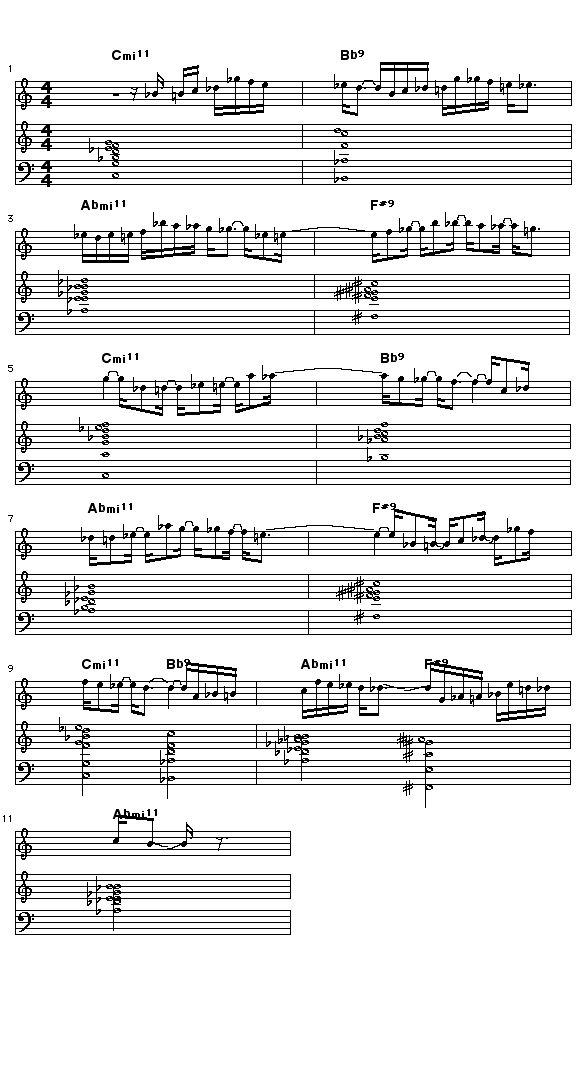|
SongTrellis |
|
||||||||||
|
|
|||||||||||
|
The score that generated the animation below repeatedly invokes a chromatic enclosure, a sequence of chromatic ascending pitches that approach a chord tone from below, followed by a sequence of chromatic descending pitches that approach the goal chord pitch from above. After the run below and then the run above are played, the goal pitch itself is played. In this example four approach tones are played below then above the goal. The chromatic approach notes are played with a fast duration (16th-note or 8th note duration). The goal tone sounds for a duration that's four times as long (quarter note or half note duration) to mark that note's importance. As the chord sequence progresses, each enclosure homes in on an appropriate chord pitch that sounds at the end of the figure. Enclosures are figures that "hem in" the goal pitch so that by the time the end of the figure is reached there is no other pitch than the goal tone that would make sense to play to end it. When an enclosure is used in a composition, the number of approach tones can vary from as few as two pitches in either direction to as many as 8 or 10 in the run on either side of the goal. The enclosure pitches can start the approach from either above or below, and can jump from above to below several times as the range of pitch motion is increasingly restricted as the figure is seemingly drawn magnetically toward the goal pitch. The tunetext operator string that is invoked repeatedly to add each enclosure to the score is "chbbbb,chbbb,chbb,chb,ch####,ch###,chx,ch#,*4,ch,/4" In the middle of the score, the duration of this figure is made to last for twice the original duration, by adding the "*2" operator in front and the "/2" operator at the end of the enclosure string. Press the Play button below the animation when the download progress bar in the player shows that download is nearly complete, otherwise the animation playback will likely stutter until download completion occurs. If you check the creation log for this idea, you'll see that I had it in final form after eight and a half minutes of labor. After that mark in the log, there's one further formatting operation listed to force both the melody and chord accompaniment to be visible in the score. In the course of building the sequence, I had suppressed the showing of the chord accompaniment while I composed, in order to focus on the building of the example melody. Here is the tunetext button that was used to generate this animation. If you press the Edit Tunetext Parameters button that appears after you click on this score, you can see the complete operator sequence that generated the score. Click on music to play blog comments powered by Disqus
|
|||||||||||
|
Last update: Tuesday, July 27, 2010 at 8:05 PM. |
|||||||||||